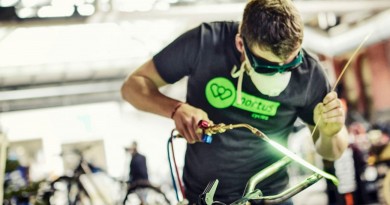Mobility as a Service converts people to active travel, finds DfT commissioned study
A Department for Transport commissioned study titled the Future of Transport has found that Mobility as a Service led businesses stand to gain big as the generations pass, all the while influencing significant transport modal shift changes.
The young, app savvy generations are overwhelmingly more in touch with Mobility as a Service products, including the likes of Uber’s transportation, Lime’s bike and electric scooter businesses and other such services that rely on usership rather than ownership.
According to the NatCen Social research, MaaS uptake among survey respondents in England has been found to be higher for men (43% vs women 29%), younger adults (57% aged 16 to 24 vs 9% aged 65+), people living in urban areas (33% vs 28% rural) and Uber users (60% vs 27% non-Uber users). Those living with a disability were found to be more likely to use demand responsive transport apps, in particular those with vehicles suited to their needs.
It is the perception of convenience that has prompted chunks of the population to look upon Mobility as a Service warmly, with the range of travel options now available particularly useful, as well as the often low price of use when compared to the burdens of ownership. Many apps now offer users location of services, payment and other convenience perks at the touch of a button.
The main downsides flagged in the study were reliance on digital barriers such as internet access and phone battery life, rather than things the services themselves could address. For this reason, the over 65 demographic, less likely to be smartphone savvy, had the most complaints. That said, 15% did believe such services to have a higher personal cost.
The main barrier to uptake was not an immediately obvious one; quite simply MaaS is not as widely available yet as many wish to see it and, where it does exist, generally it’s alongside a strong public transport ecosystem.
Most compelling for its further rollout from a societal point of view is that such services were fund to have great potential for reduction in reliance on personal car use.
The paper writes: A study found that almost a quarter (23%) of survey respondents in England said they would reduce personal car/van use if MaaS were available, and 7% said they would give up their car.”
In Greater Manchester where services exist participants in the study reported lowered reliance on cars and an increase in active travel. Crucially for bike shops there’s a kick, 1 in 4 trial participants decided to try new travel modes in response to tailored recommendations made by the app.
Bike Sharing
Of all the mobility services, bike sharing was the most commonly used door-to-door commuter and last-mile journey method. The primary motivator for users was the chance to save money on journey costs, particularly for those on lower incomes. On the other side of the coin, one again safety concerns became the lead reason for lack of use. Availability of bikes and distance to an available cycle weighed in as negatives, adding weight to the notion that share scheme must offer convenience first and foremost and operate widely.
Electric bikes
In another boon to bike shops, 29% of users of public share electric bikes later said they would now be more likely to buy their own.
“E-bike users were motivated by health, enjoyment, relatively low cost and by the social aspect of using and sharing their e-cycling data,” wrote the paper.
Furthermore, as has been seen elsewhere in Europe, there is evidence that the electric bike has prompted a modal shift; 46% of e-bike scheme users had previously leaned on driving their cars, or taking a taxi.
Predominently, electric bike share scheme users have had a broad age range, from 25 to 65 and include a healthy balance of men and women, as well as those with health, fitness and physical barriers. People who ‘never’ or ‘rarely’ cycle were more involved where schemes exit.
“Half of those who joined shared e-bike schemes (2,667 users across 11 locations in England and Wales) used shared e-bikes at least once a week. In the same programme, it was found that the average trip length on an e-bike was 5 miles (compared with an average journey on standard bikes of 3 miles),” said the study.
Further reading: Why usership, not ownership, is the future for the bicycle industry.



